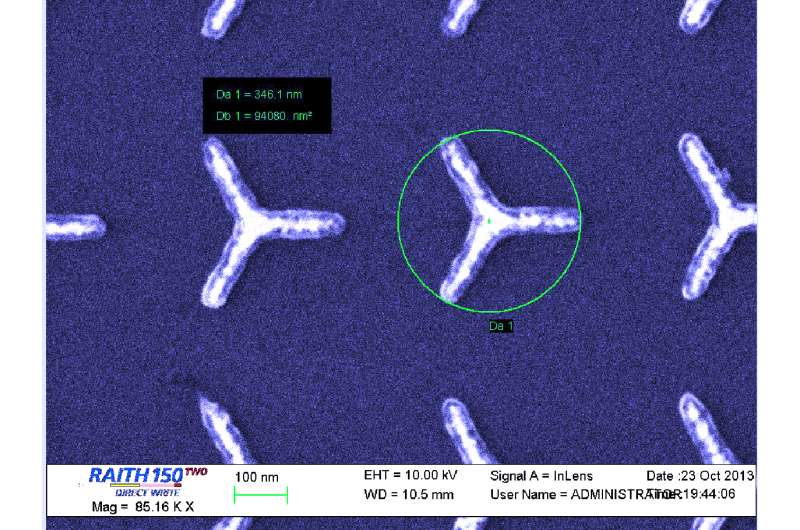MEPhI helps to create memory nanoelements for satellites

Scientists of MEPhI Institute of functional nuclear electronics ( and the University of Georgia have developed a new technology for creation of magnetic memory elements of nanometer sizes for astronomical and military equipment. The results of work have been published in the Journal of Applied Physics.
The new magnetic elements are iron-nickel alloy triangles with sides of several hundred nanometers. The new elements have magnetic properties that allow changing the form of the triangular nanostructure – the concavity of the sides and elongation of the tops. Such magnetic nanostructures can function as logic cells because the state of magnetization in its top is explained by the magnetization of two other tops.
Connection of nanomagnetic structures into a system (bidimensional chains) gives an opportunity to create a logic and memory array in which information readout consists of so-called magnet-tunneling contacts at the nanostructure angles.
The advantages of logic and memory arrays based on magnetic nanostructures are radiation resistance, high stability of information storage and energy efficiency. Their power consumption is about 0.1 microwatt, which is an order less than CMOS transistors.
Nanotriangle logic/memory cells have astronomical and military applications, because they confer not only radiation resistance but also have a small size. They can also be used in the domestic sphere, in cell phones and computers, for instance, which will significantly lower energy consumption.
Journal information: Journal of Applied Physics
Provided by National Research Nuclear University















